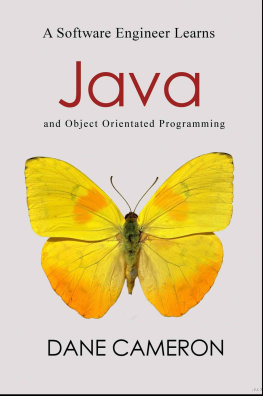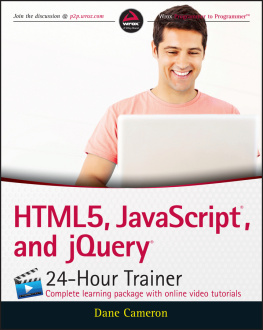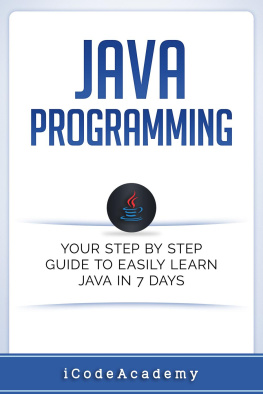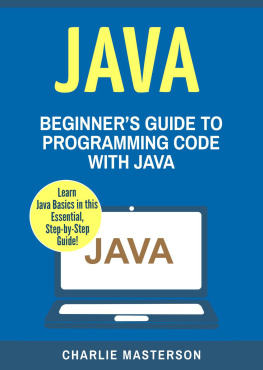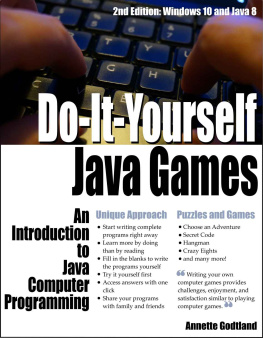Dane Cameron - A Software Engineer Learns Java and Object Orientated Programming
Here you can read online Dane Cameron - A Software Engineer Learns Java and Object Orientated Programming full text of the book (entire story) in english for free. Download pdf and epub, get meaning, cover and reviews about this ebook. year: 2015, publisher: CreateSpace Independent Publishing Platform, genre: Computer. Description of the work, (preface) as well as reviews are available. Best literature library LitArk.com created for fans of good reading and offers a wide selection of genres:
Romance novel
Science fiction
Adventure
Detective
Science
History
Home and family
Prose
Art
Politics
Computer
Non-fiction
Religion
Business
Children
Humor
Choose a favorite category and find really read worthwhile books. Enjoy immersion in the world of imagination, feel the emotions of the characters or learn something new for yourself, make an fascinating discovery.
- Book:A Software Engineer Learns Java and Object Orientated Programming
- Author:
- Publisher:CreateSpace Independent Publishing Platform
- Genre:
- Year:2015
- Rating:4 / 5
- Favourites:Add to favourites
- Your mark:
A Software Engineer Learns Java and Object Orientated Programming: summary, description and annotation
We offer to read an annotation, description, summary or preface (depends on what the author of the book "A Software Engineer Learns Java and Object Orientated Programming" wrote himself). If you haven't found the necessary information about the book — write in the comments, we will try to find it.
Learn to write Java the right way - using the latest version of the language.
Amazon Bestselling author Dane Cameron has worked professionally with Java for the last 16 years, and continues to use Java on a daily basis. In this book he shares the knowledge he has gained over that time, and teaches Java as it should be learned by anyone aspiring to become a professional software engineer, or migrate to Java from other technologies.
This book walks you through all the key features of Java Standard Edition. All important features of the Java language are covered in detail, but throughout the book you will learn far more than just how to write Java code, you will also learn:
- How to structure your code using design patterns
- How to use the Eclipse IDE to build, debug and execute Java programs
- The fundamental principles of Object Orientated Programming, and how these relate to Java
- How Java is a multi-paradigm language, and how to embrace the best of functional programming and imperative programming techniques into your code
- How to write automated unit tests for your code
- How to document and distribute your programs
This book has been written from the outset to include all the new featured Java 8 has to offer, including lambda expressions and the Streams API. The intention of this book is to leave you with a deep understanding of how Java works, and how you can use it for solving a variety of problems.
By the end of the book you will be in a position to continue with more advanced topics, such as Java EE, if you choose, or you can use the knowledge you have gained to solve interesting real world problems.
Dane Cameron: author's other books
Who wrote A Software Engineer Learns Java and Object Orientated Programming? Find out the surname, the name of the author of the book and a list of all author's works by series.

